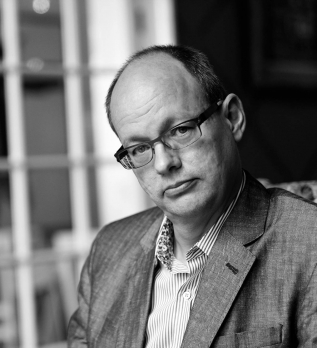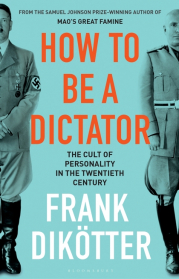研究故事
VP(R)'s Picks: Patterns of Tyranny
上一頁
Renowned HKU Historian Professor Frank Dikӧtter examines some of the worst dictatorships of the 20th century to detect patterns of behaviour and insights on how they seized and retained power.
The 20th century produced some of the most murderous regimes in human history. Joseph Stalin and Mao Zedong were responsible for the deaths of millions of ordinary people, while Adolf Hitler was the architect of the Holocaust. Other dictators, such as Kim Il-sung of North Korea and Nicolae Ceaușescu of Romania, worked on a smaller scale but also destroyed countless lives. What were the factors that enabled these men to commit such atrocities?
Professor Frank Dikӧtter, in his new book How to be a Dictator, puts eight dictators under the microscope. He finds that while each one of them had unique qualities and operated in unique circumstances, they worked from a similar playbook.
All of these leaders, who also include Benito Mussolini of Italy, François (Papa Doc) Duvalier of Haiti and Mengistu Haile Mariam of Ethiopia, relied on a culture of violence to instil fear in their own populations. But they also fostered a cult of personality in which ordinary people were compelled to worship them in public. Throughout the twentieth century, hundreds of millions of people had to bow to their leader, pass by his statue, recite his work, praise his name, extol his genius. They were required to create the illusion of consent, condemned to perpetual enthusiasm, forced to pledge their loyalty in endless parades, rallies and public displays of adulation. The cult of personality helped dictators get around a major paradox: they had not been elected at the ballot box yet had to pretend that they were loved by their people.
The cult of personality was also important when it came to the immediate entourage of dictators. They had grabbed power by organising a coup or rigging the system, but they soon realised that an ally or a rival might do the same to them. They lived in fear of a stab in the back. By compelling all and sundry to acclaim them in public, dictators turned everyone into a liar. When everyone lied, no one knew who could be trusted, making it more difficult to find accomplices and organise a coup.
All of them ended up being surrounded by sycophants, and as a result took all major decisions on their own. They teetered between hubris and paranoia, and were fearful of enemies everywhere, at home and abroad. A few lost touch with reality altogether, Professor Dikӧtter said, with devastating consequences for tens of millions of people. Hitler and Mussolini had an ignominious death, although some, including Mao and Stalin, died of natural causes. In all cases their legacies cast a long shadow. Professor Dikӧtter tells of people weeping on the streets when Mao died, then quietly celebrating with wine behind closed doors.
How to be a Dictator was named a Book of the Year by the New Statesman, the Financial Times and The Economist. In 2011, Professor Dikӧtter won Britain’s most prestigious book award for non-fiction, the Samuel Johnson Prize (now called the Baillie Gifford Prize), for Mao's Great Famine: The History of China's Most Devastating Catastrophe. His two follow-up book that also examined China under Mao were short-listed for the 2014 Orwell Prize and 2017 PEN Hessell-Titman Prize.





